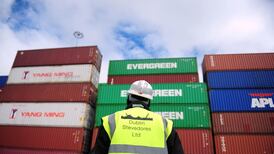Irish consumers pay on average 42 per cent more for basic goods and services than their European Union (EU) counterparts.
That’s according to Eurostat’s latest price comparison survey, which ranks Ireland as the second most expensive state in the EU, behind Denmark.
The survey, which assesses price differentials across more than 2,000 consumer goods and services, found prices here were 142 per cent of the EU average last year.
This placed Ireland ahead of countries such as Luxembourg (134 per cent), Finland (124 per cent), Sweden (114 per cent), France (110 per cent) and Germany (109.6 per cent).
READ MORE
Ireland was eclipsed in price terms only by Denmark, where prices were 143 per cent of the EU average (or 43 per cent higher).
Ireland was found to be the most expensive EU country for alcohol and tobacco, with prices a considerable 211 per cent of the EU average, or 111 per cent above the average for the bloc. Alcohol prices by themselves were 101.5 per cent higher in Ireland while tobacco was 158 per cent more expensive.

Industrial action at Aer Lingus: How will it impact passengers?
Eurostat said the large price variation in alcohol and tobacco was mainly driven by taxation.
The relatively high cost of living here, however, was not confined to alcohol and tobacco. Across a range of basic items, Irish consumers were found to be paying more.
Price levels in restaurants and hotels were 28 per cent above the EU average. Irish consumers also paid on average 18 per cent more for energy, 15 per cent more for transport, 11 per cent more for food and 7-8 per cent more for household appliances and electronic devices.
[ Cost-of-living rise outstrips social welfare increases, report findsOpens in new window ]
In the area of communications, which covers mobile phone costs, Irish prices were found to be 42 per cent above the EU average.
The only area Irish consumers were paying less than EU average was in the category of clothing, where prices were 4 per cent below the prices typically paid elsewhere.
While Denmark and Ireland were the most expensive EU nations, Bulgaria and Romania were the cheapest, with price levels 40 per cent below the EU average. Outside of the EU bloc, Switzerland and Iceland had the highest prices, 174 per cent and 156 per cent of the EU average, respectively.
“An understanding of the differences in price levels is important in the comparison of economic data, such as gross domestic product (GDP), because higher relative prices could make an economy look healthier than it really is,” Eurostat said.
While many factors drive prices, average hourly labour costs in Ireland last year were €40, significantly above the EU average of €31.80.
- Sign up for Business push alerts and have the best news, analysis and comment delivered directly to your phone
- Join The Irish Times on WhatsApp and stay up to date
- Our Inside Business podcast is published weekly – Find the latest episode here















